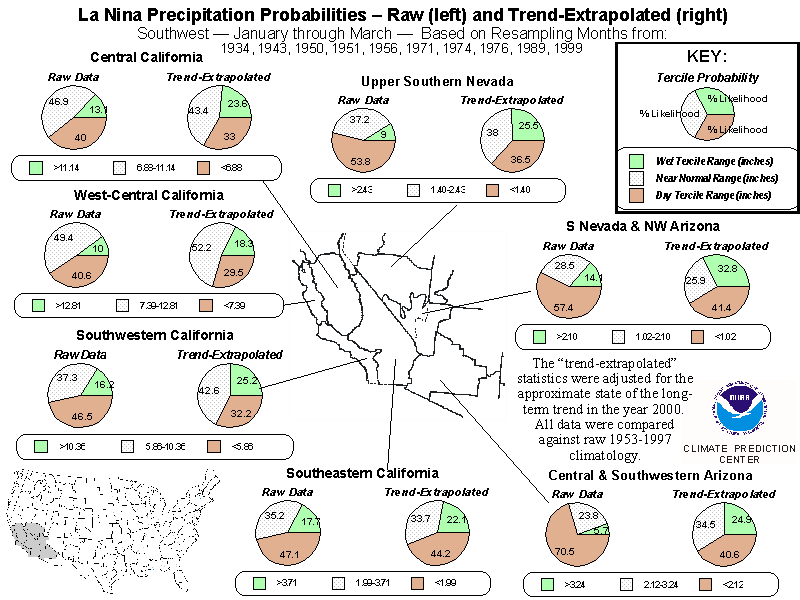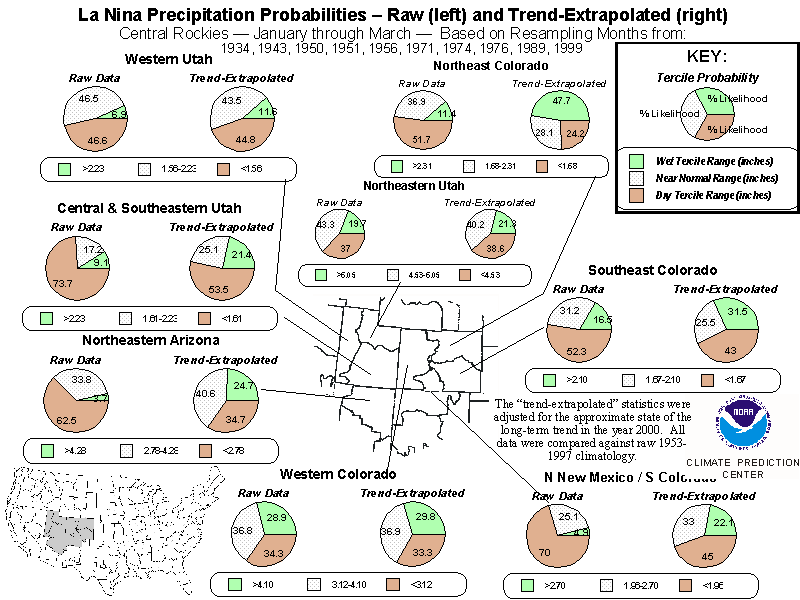

La Niņa is characterized by unusually cold ocean temperatures in the equatorial Pacific, as compared to El Niņo, which is characterized by unusually warm ocean temperatures in the equatorial Pacific
El Nino La Nina


|
La Niņa impact on the global climate
Global climate La Niņa impacts tend to be opposite those of El Niņo impacts. In the tropics, ocean temperature variations in La Niņa tend to be opposite those of El Niņo. At higher latitudes, El Niņo and La Niņa are among a number of factors that influence climate. However, the impacts of El Niņo and La Niņa at these latitudes are most clearly seen in wintertime. In the continental US, during El Niņo years, temperatures in the winter are warmer than normal in the North Central States, and cooler than normal in the Southeast and the Southwest. During a La Niņa year, winter temperatures are warmer than normal in the Southeast and cooler than normal in the Northwest. See U.S. La Niņa impacts from the National Weather Service.
|
|||||||


For more information: for your region of the world, for an additional time frame go to:
http://www.cpc.ncep.noaa.gov/products/analysis_monitoring/lanina/usdivtp/writeup.shtml#usmaps